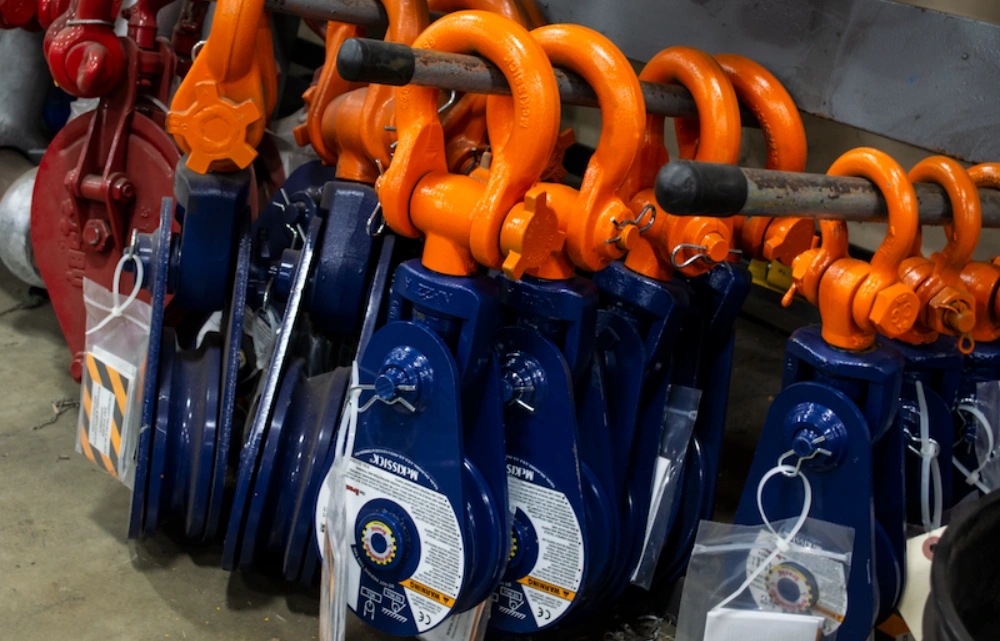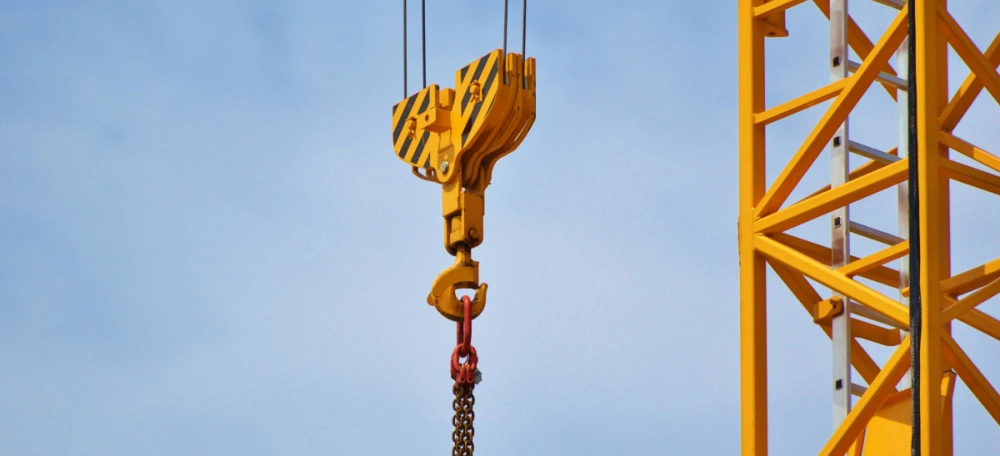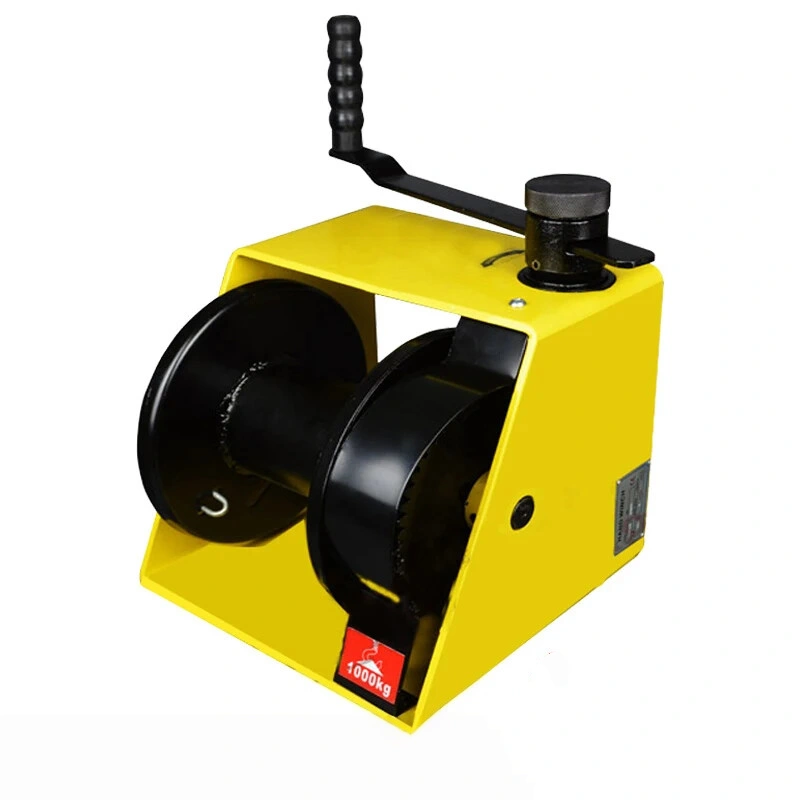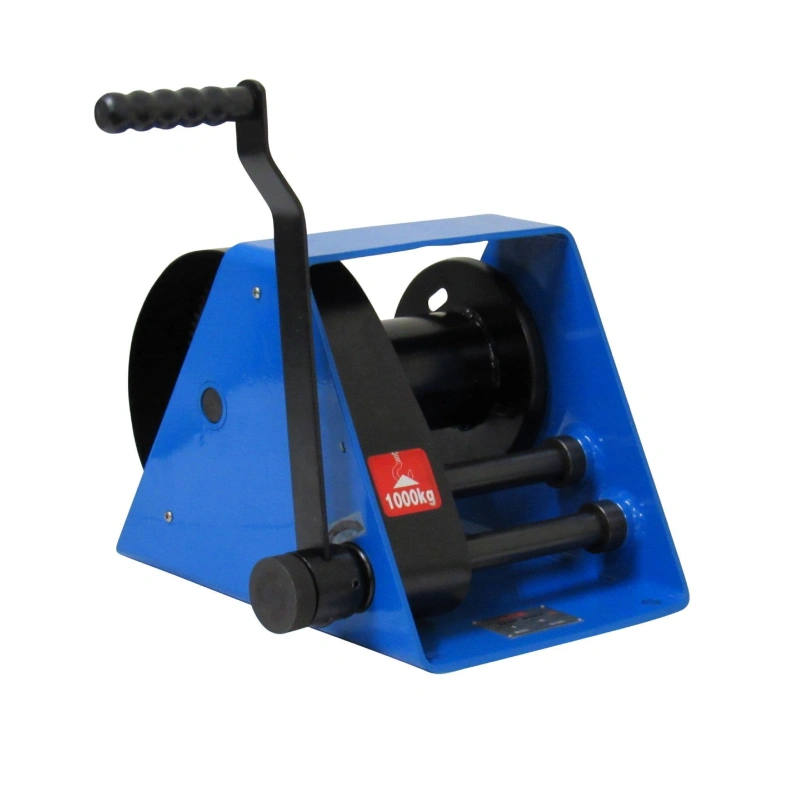A snatch block works by changing the direction of a rope or cable, allowing you to pull or lift heavy objects with less effort. When you use a snatch block, the pulley inside redirects force and spreads the load, making lifting safer and easier.
In many industries, double sheave snatch block pulleys offer even greater mechanical advantage for tough lifting jobs.
You often see them used in mining, oil, and rescue operations because they help you move heavy loads more efficiently. If you ever wondered how a snatch block works, remember that it gives you more control and power in demanding situations.
Key Takeaways
A snatch block changes the direction of a rope or cable, making it easier to lift or pull heavy objects.
Using a snatch block provides mechanical advantage, allowing you to move heavier loads with less effort.
Always inspect your snatch block for damage before use to ensure safety and reliability.
Choose the right snatch block based on load capacity and rope size for your specific lifting or recovery needs.
Regular maintenance, like cleaning and lubrication, keeps your snatch block functioning smoothly and safely.
What Is a Snatch Block?

Snatch Block Basics
You may ask, What is a snatch block? You use a snatch block when you need to lift or pull heavy objects safely. In mechanical engineering and rigging, what is a snatch block? It is a block with fixed cheeks secured by a pin.
This design lets you rig heavier loads and spread force evenly. You reduce the risk of damage compared to using simple hooks or carabiners.
A snatch block has several main parts that work together. The table below shows these components and their functions:
Component | Function |
|---|---|
Grooved Wheel/Pulley | Holds the rope or cable, lowers the friction during movement. |
Casing | Protects the pulley, opens for easy rope placement. |
Directional Change | Changes the direction of your line for efficient lifting or pulling. |
Mechanical Advantage | Lets you use less force to move heavier loads. |
Load Sharing | Spreads the load between lines, keeps your setup safe. |
Rope Protection | Smooth surface keeps your rope from wearing out. |
Versatility | Comes in many sizes and shapes for different jobs. |
When you wonder what a snatch block is, remember that it is not just one type. You find single, double, and triple sheave snatch blocks. Triple sheave snatch blocks help with very heavy jobs in construction, mining, and oil rigs.
Some snatch blocks have hooks or shackles. You can use them with wire rope or synthetic rope, and they handle loads up to 60 tons.
Powerful Machinery offers a wide range of snatch blocks for every need. You get certified, high-performance products that meet strict safety standards. You can choose snatch blocks with hooks, shackles, or tail board designs for your lifting or rigging project.
What Does a Snatch Block Do?
You may wonder, what does a snatch block do? You use it to change the direction of a rope or cable. This makes lifting or pulling easier and safer. What does a snatch block do for you? It gives you a mechanical advantage, so you use less force to move heavy loads. You also protect your rope and spread the load, which keeps your equipment safe.
Snatch blocks come in different sizes to fit various rope diameters. Some are designed for large loads and heavy-duty lifting. They have grooved wheels for threading cable or rope. You can see how prices vary based on size, material, and features in the chart below:

When you ask what is a snatch block, you see that it is a versatile tool. You use it in construction, marine, rescue, and many other industries. Powerful Machinery gives you reliable snatch blocks that help you work safely and efficiently.
How Does a Snatch Block Work?
Redirecting Force
When you use a snatch block, you change the direction of force in your lifting or winching setup. This tool features a hinged side, so you can easily insert or remove the rope or cable. You find this design especially helpful in rigging and towing because you can quickly reposition the rope.
In recovery operations or marine applications, you often need to move a load around obstacles or tight spaces. A snatch block lets you do this by redirecting the winch pull, even when you cannot access the load directly.
You set up a firm anchor point, such as a tree or a fixed structure.
You run the winch line through the snatch block.
The snatch block changes the direction of force, guiding the load where you want it to go.
A crane snatch block is built to change the direction of a load or adjust the lifting angle. You do not need to move your lifting equipment. Instead, you redirect the load path, which spreads the load across your rigging system. This method keeps your setup stable and safe.
Tip: Powerful Machinery offers snatch block products like the Snatch Block With Hook and Snatch Block With Shackle. These blocks have robust construction and easy-to-use designs, making them reliable for redirecting force in demanding jobs.
Here is a quick comparison between a snatch block and a standard pulley:
Feature | Snatch Block | Standard Pulley |
|---|---|---|
Design | Opens with a gate for easy threading of wire rope | Always closed, requires threading through the axle |
Operation | Allows for quick reeving of the wire rope | Requires reeving the wire rope through the opening |
Applications | Used in various lifting operations, including recovery and towing | Used for direction and weight lifting in hoists and winches |
Mechanical Advantage
You gain a mechanical advantage when you use a snatch block. This means you can move a heavy load with less effort. The principle is simple. When you run your winch line through a snatch block and anchor the bitter end, you double your pulling power.
For every pound of force you apply, the block experiences twice the load. If you attach the bitter end to the load, you cut the force needed in half. You get two pounds of pull for each pound of winch effort.
You can double your winch’s pulling power by using a snatch block.
You reduce the strain on your winch and cable.
You spread the load across multiple lines, which increases safety.
For example, some snatch blocks, like the Champion Power Equipment C11003, can handle loads up to 15,000 pounds and double your pulling power. Others, such as the Gear America Snatch Block, are rated at 9 US tons and cut the load on your winch in half.
When you ask how a snatch block works, you see that it not only changes the direction of force but also helps you manage heavy loads more efficiently. You can use snatch blocks in winching, lifting, and recovery operations.
Powerful Machinery’s Snatch Block With Hook and Snatch Block With Shackle are designed for these tasks. They offer high load ratings, easy rope insertion, and durable materials. You get reliable performance in construction, marine, and rescue jobs.
Note: Regular maintenance keeps your snatch block working smoothly. You should wash it with fresh water in dusty or salty environments, check for corrosion, and replace rubber grommets when needed.
Powerful Machinery builds snatch blocks with rugged construction and easy disassembly, so you can maintain them for long-term reliability.
When you understand how a snatch block works, you can set up safer and more efficient lifting systems. You control the direction of force, gain mechanical advantage, and distribute the load across your rigging. This knowledge helps you choose the right snatch block for your job and use it with confidence.
How to Use a Snatch Block?
Setup Steps
You want to know how to use a snatch block for recovery or lifting tasks. Start by choosing the right snatch block for your load and application. Powerful Machinery offers options with hooks, shackles, and tail board designs. Follow these steps to set up your snatch block safely and effectively:
Inspect your snatch block for any damage or wear. Check the pulley, casing, and all moving parts.
Select an anchor point that can handle the load. Trees, steel posts, or secure vehicle frames work well.
Open the snatch block and insert your rope or cable into the grooved wheel. Make sure the rope sits properly.
Close the casing and lock the pin or latch.
Attach the snatch block to your anchor point using the hook or shackle.
Connect the winch line or lifting cable to your load.
Apply the load carefully and watch for any movement or shifting.
Maintain a safe distance from the snatch block and rope during operation.
You must always choose the right snatch block for your specific job. Powerful Machinery’s certified products meet strict safety and compliance standards. The table below shows key certifications:
Certification | Standard |
|---|---|
ASME B30.26 | Safety |
ISO9001 | Quality |
TUV Rheinland | International |
Safety Tips
Safety is your top priority when using a snatch block. Follow these safety tips for using snatch blocks to protect yourself and your equipment:
Never exceed the rated capacity of your snatch block. Overloading can cause failure.
Always check the load rating before starting any recovery or lifting job.
Snapped lines can cause serious injury. Inspect your rope or cable for fraying or damage.
Keep hands, feet, and clothing away from the snatch block and moving lines.
Maintain a safe distance from the load and snatch block during operation.
Use gloves and eye protection for added safety.
Apply the load carefully and avoid sudden jerks.
Follow best practices for snatch block use in every recovery situation.
Safety and compliance matter in every lifting or recovery job. Powerful Machinery snatch blocks meet industry standards, so you can trust their performance.
Snatch Block Applications
Lifting and Rigging

You often face challenges when lifting heavy loads in construction, marine, or industrial settings. A snatch block gives you more pulling power and makes your job safer. You use it to change the direction of a cable, which helps you move loads around obstacles.
This tool increases pulling power and reduces strain on your winch and cable. You can see how snatch blocks improve efficiency and safety in the table below:
Function | Benefit |
|---|---|
Increase the mechanical advantage | Doubles a winch’s pulling power, enhancing efficiency in lifting. |
Change the direction of the cable | Allows for navigation around obstacles, improving safety in tight spaces. |
Reduce strain on winches and cables | Distributes load weight, minimizing risk of equipment failure. |
You need reliable equipment for rigging and recovery operations. Powerful Machinery’s Tail Board Snatch Block stands out in these scenarios. It uses high-strength steel and offers options like bronze bushings or roller bearings.
You get durability and smooth operation, even in tough environments. The Snatch Block Shackle also provides strong pulling power and easy rope insertion, making it ideal for lifting heavy loads in construction and marine projects.
Winching and Recovery
When you work on recovering stuck vehicles or pulling heavy objects, you need a snatch block that can handle high loads. Many heavy-duty snatch blocks have a maximum capacity of 24,000 lbs and work with winches up to 12,000 lbs.
You can use them with 3/8″ wire rope for strong and safe recovery. Here are some key features you should look for:
Maximum capacity of 24,000 lbs for heavy-duty snatch blocks.
Designed for winch capacities up to 12,000 lbs.
Compatible with 3/8″ wire rope.
You often use snatch blocks in outdoor or marine settings. Materials like steel grades and ductile iron give you strength and shock absorption. Hot-dip galvanizing protects against corrosion in marine environments.
Powder coatings and hard-chrome plating increase wear resistance and let you match your equipment to your brand. You should also consider environmental factors. Continuous exposure to UV light can degrade synthetic materials. Weather, elevation, and location affect material strength.
Powerful Machinery’s snatch block products help you in rigging and recovery operations. You get reliable pulling power, durability, and safety. These tools make lifting heavy loads and recovering stuck vehicles easier and safer.
Conclusion
You gain real advantages when you use a snatch block for lifting or recovery. This tool increases safety, lets you handle heavier loads, and gives you more control. The table below shows how a snatch block compares to other rigging options:
Feature/Benefit | Snatch Block | Rope Retention Pulley |
|---|---|---|
Weight | Heavy | Lightweight |
Material | Steel | Aluminum |
Friction Losses | Higher | Lower |
Safety Hazards | Higher | Lower |
Rigging Speed | Slower | Faster |
Working Load Limit | Varies | 22,000 pounds |
Powerful Machinery offers reliable snatch blocks for tough jobs. Add one to your kit to make lifting and pulling safer and easier.
FAQ
How do you choose the right snatch block for your job?
You should check the load rating and rope size. Match the snatch block to your lifting or pulling needs. Look for certified products that meet safety standards. Powerful Machinery offers options for different applications.
Can you use a snatch block with synthetic rope?
Yes, you can use a snatch block with synthetic rope. Make sure the pulley surface is smooth and free of sharp edges. This helps protect the rope from damage during operation.
What maintenance does a snatch block require?
You need to inspect the snatch block regularly. Clean it after use, especially in dusty or salty environments. Lubricate moving parts and check for wear or corrosion. Replace damaged components to keep your equipment safe.
Is it safe to exceed the rated capacity of a snatch block?
No, you should never exceed the rated capacity. Overloading can cause equipment failure and serious injury. Always follow the manufacturer’s guidelines for safe operation.
Where can you buy certified snatch blocks?
You can buy certified snatch blocks from Powerful Machinery. Visit their official website for a wide selection of lifting and rigging solutions that meet international safety standards.


